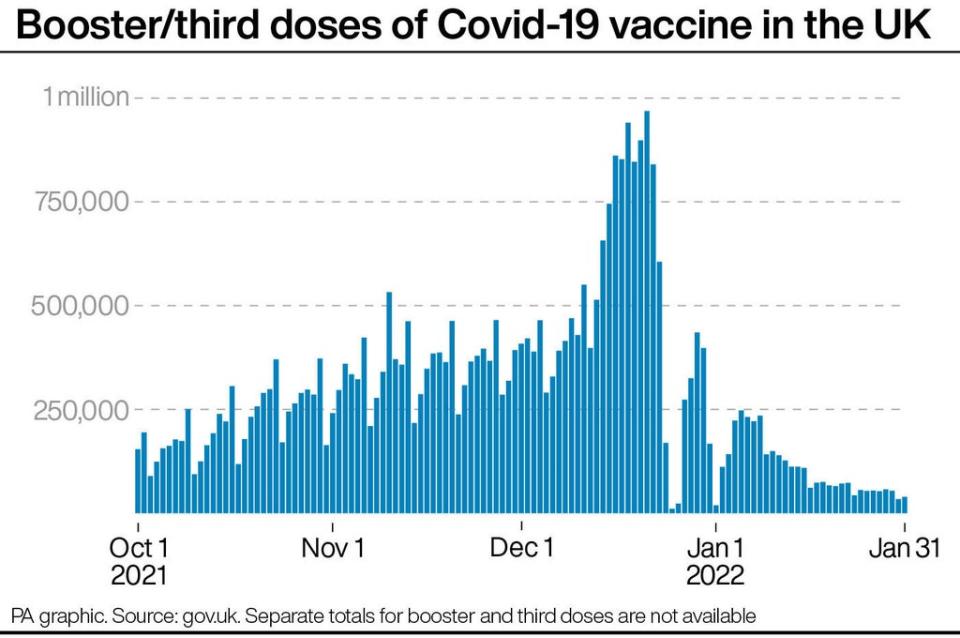Covid symptoms appear much more quickly than previously thought – study

Symptoms of Covid-19 appear much more quickly following infection than previously thought, according to a Government-backed study.
The landmark Human Challenge Programme, which saw healthy people deliberately infected with coronavirus, found symptoms start to develop very fast, taking just two days on average to appear.
Experts found that coronavirus infection first appears in the throat and then peaks on around day five.
At this point, the infection is significantly more abundant in the nose than the throat, with people keeping live virus in their nose for around 6.5 days in total.
Until now, experts, including from the World Health Organisation (WHO), have widely believed it takes five to six days from when someone is infected with Covid for symptoms to show.

But the new research, from Imperial College London the Department of Health and Social Care (DHSC), challenge trial experts hVIVO and the Royal Free London NHS Foundation Trust, suggests mild symptoms are apparent after a few days, even if it takes up until day five for them to become more noticeable to many people.
For the study, researchers deliberately infected 36 volunteers aged 18 to 29 (who had never had Covid) with a very small dose of coronavirus via nasal drops.
The dose was the equivalent of less than one respiratory droplet if somebody was at the peak of their infection.
All the people in the study were kept in a controlled environment for at least 14 days in the quarantine unit at the Royal Free Hospital.
Of the group, just over half became infected with Covid, giving an infection rate of 53%.
Sixteen of the group developed mild-to-moderate cold-like symptoms, including a stuffy or runny nose, sneezing and sore throat, but none fell seriously ill.
Some of the group experienced headaches, muscle/joint aches, tiredness and fever.
This shows the potential of the virus to replicate very, very quickly
Dr Andrew Catchpole
Describing the findings on a graph to a London media briefing, lead investigator Professor Chris Chiu said: “Very shortly after they are given the virus, within two days, people start to have detectable virus, first in the throat but then in the nose, which rises very quickly.”
He said that, among those who were uninfected and had no symptoms, some did have very low levels of viral detection, suggesting there may be an immune process going on to suppress the infection.
Most of the people who did have symptoms suffered a loss of smell, but this often did not appear until a week after respiratory symptoms.
The study also found that lateral flow tests are highly effective at picking up the virus, with modelling suggesting having a test every three to four days will capture many cases, rising to 90% with daily tests.
Dr Andrew Catchpole, chief scientific officer at hVIVO, said the virus used in the study was from very early on in the pandemic but experts believe the findings would also apply to the Delta and Omicron variants.
“This shows the potential of the virus to replicate very, very quickly,” he said.
“We haven’t done Delta or Omicron in challenge studies so all we can do is speculate what might be seen.
“What we do know – from what’s seen in the field – is that those viruses do … transmit very quickly and replicate very quickly, so we would expect there to be a lot of transferrable data between the two.”

The findings, published on a pre-print server, have not yet been peer-reviewed, but experts hope they will lead to future studies to test new vaccines and medicines for Covid-19.
Prof Chiu said: “Our study reveals some very interesting clinical insights, particularly around the short incubation period of the virus, extremely high viral shedding from the nose, as well as the utility of lateral flow tests, with potential implications for public health.”
The study also found that high levels of viable (infectious) virus could still be picked up in lab tests for up to nine days, and 12 days in some cases.
Peak levels of virus were significantly higher in the nose than in the throat, suggesting a potentially greater risk of virus being shed from the nose than the mouth, it said.
The researchers said this highlights the need for people to use facemasks properly that cover both the mouth and nose.
This data underline just how useful a tool lateral flow tests can be
Professor Sir Jonathan Van-Tam
Professor Sir Jonathan Van-Tam, deputy chief medical officer for England, said: “Scientifically these studies offer real advantage because the timing of exposure to the virus is always known exactly, therefore things like the interval between exposure and the profile of virus shedding can be accurately described.
“This important study has provided further key data on Covid-19 and how it spreads, which is invaluable in learning more about this novel virus, so we can fine-tune our response.
“Challenge studies could still prove to be important in the future to speed the development of ‘next-generation’ Covid-19 vaccines and antiviral drugs.
“This data underline just how useful a tool lateral flow tests can be to pick up people when infectious and the importance of wearing a face covering in crowded, enclosed spaces.”

 Yahoo News
Yahoo News 
